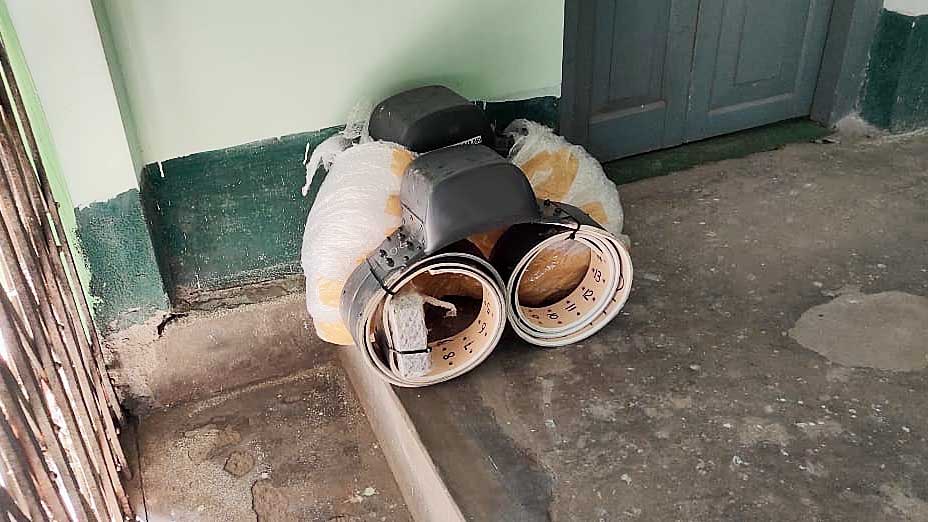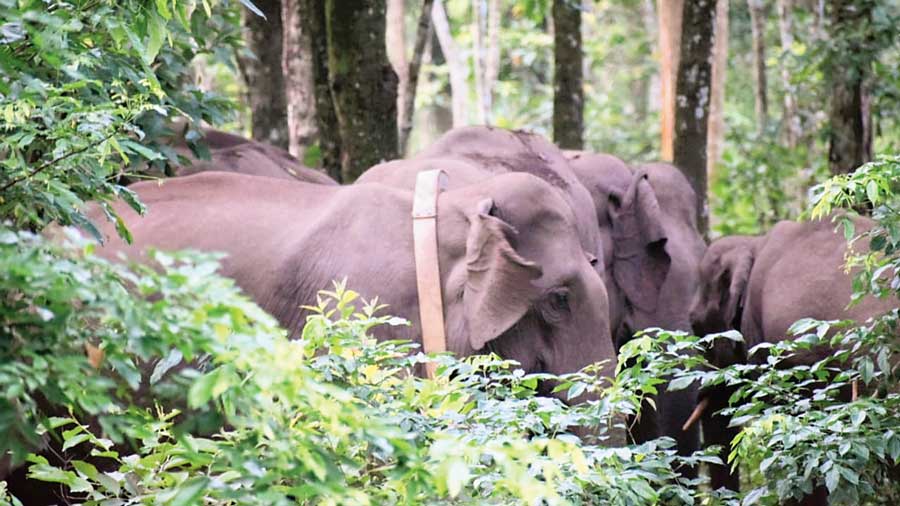A project to tag elephants in south Bengal with radio collars to track their real-time movements ‘launched’ a couple of years ago is yet to take off.
Three radio collars, provided by a German institute called GIZ, have been lying idle with the forest department since January this year, said officials.
The GPS-enabled collars were supposed to track real-time location and movement of elephant herds in south Bengal, which could have reduced human-animal conflict, said a researcher associated with the project.
Herds from Jharkhand’s Dalma range stray into villages in the south Bengal districts of Bankura, Paschim Medinipur and Jhargram every year, destroying crop and occasionally killing humans.
Barely a week ago, a herd of 49 elephants ravaged paddy farms in parts of East Burdwan after entering the district through an unorthodox route, making it difficult for foresters to restrain them. The herd is said to have damaged at least 1,000 acres of paddy fields on their way.
According to sources in the forest department, several factors stalled the project in south Bengal. “The project was supposed to have been implemented first in 2018. But the herds moved away to Dalma. The intense heat in summer in the western districts of Bengal was also a stumbling block,” said one of them.
In 2019, the project was stalled by a tiger that had entered the Lalgarh forests. The big cat was eventually beaten to death.
A retired forest official who was involved in the project also attributed the delay to “bureaucratic inefficiency”.
“Officers come and go. Their priorities keep changing,” he said.

Unused collars Telegraph picture
Multiple elephants in north Bengal have been radio-collared over the past few years. Tracking the elephants and their herds has helped the forest department in mitigating human-wildlife conflict.
Tagged on matriarchs, the GPS-enabled radio collars provide real-time updates about the location of a herd. A tool embedded in the collar sends signals.
The Asian Nature Conservation Foundation, which functions out of the campus of the Indian Institute of Science in Bangalore, had partnered the Bengal forest department in the collaring project in north Bengal.
“Elephant movement in south Bengal has never been tracked in an organised and scientific manner. It is largely dependent on hearsay and expert opinion. The radio collars would provide the first empirical evidence on elephant movement in south Bengal,” said Aritra Kshettry, an elephant ecologist who has been part of previous collaring exercise in north Bengal and is a consultant with GIZ.
“The other advantage would be the possibility of early warning systems.
Tagging one elephant helps in tracking a herd of 20.
Tagging two elephants would mean tracking two herds or 50-60 elephants. Early warnings can help the forest department and local residents be better prepared,” said Khsettry.
Debal Ray, the third chief wildlife warden of Bengal in the tenure of the project, said he was aware of the unused collars in south Bengal. “Elephants in north Bengal have already been tagged. But in south Bengal, the job has to be done. I will have to check and find out the reason for the delay,” he said.
